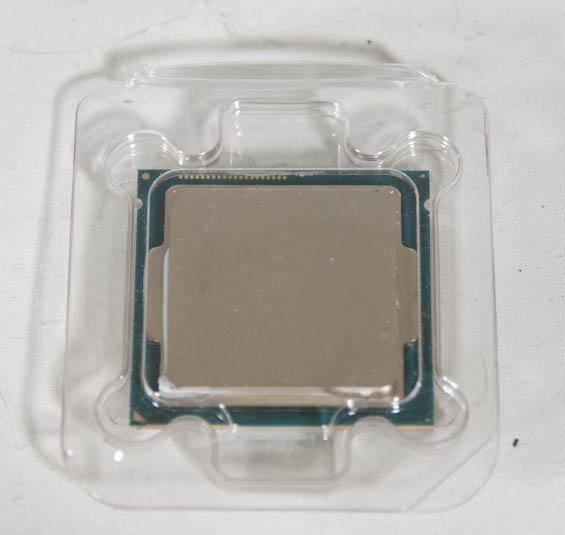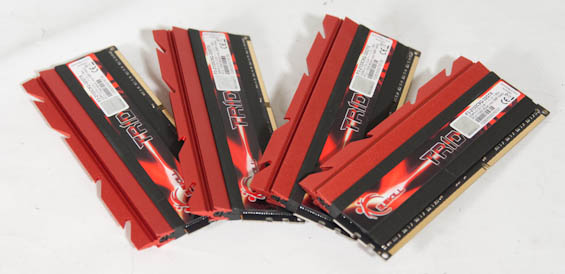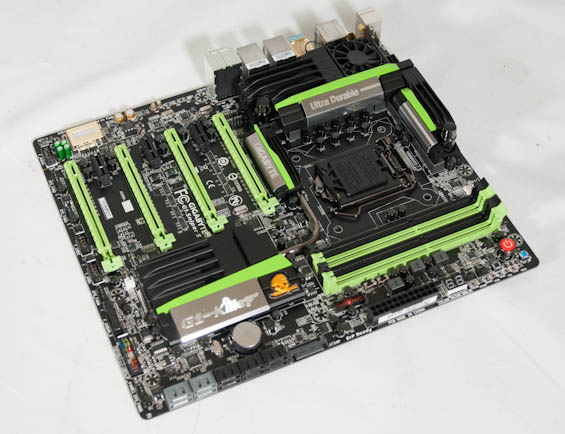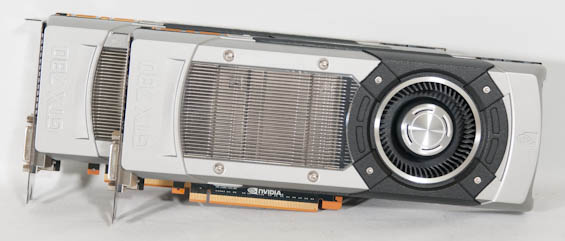The Neophyte's Custom Liquid Cooling Guide: How To, Why To, What To Expect
by Dustin Sklavos on September 30, 2013 12:01 AM ESTComponent selection for this build was tricky, but not overly so. If you're going to engage in an undertaking like this, you really do want to pick the most ideal hardware you can. Thankfully we had a few vendors willing to step up and donate some very high quality kit to this build.
Intel Core i7-4770K Processor

For our CPU we went with Intel's shiny new Haswell architecture in the form of the Core i7-4770K. This quad-core, hyper-threaded chip runs at a nominal 3.5GHz clock with a maximum turbo boost of 3.9GHz on a single core, and is one of Intel's first chips to feature an integrated VRM. Intel's 22nm chips seem to have been largely thermally limited, making the newest member of the family a compelling choice to be the center of a watercooling build. You do always run the risk of getting a dud CPU that simply doesn't want to run at a high clock speed without an unrealistic amount of voltage, though. Note that ours is a retail chip and not an Engineering Sample, so it's subject to the same potential limitations as any CPU you might pick up off the shelf.
Our thanks to CyberPowerPC for graciously donating this processor.
G.Skill Trident X 32GB (4x8GB) DDR3-2133 RAM

Our resident motherboard reviewer and overclocking expert, the good Dr. Ian Cutress, recommended we go with G.Skill for this build, and G.Skill was happy to oblige with a respectable kit of fast DDR3. This kit runs at a nominal 1600MHz, but features an XMP profile that sets it to run at 2133MHz with a CAS Latency of 9 at 1.6V. I'm not an aggressive memory overclocker, which makes the ready-out-of-the-box 2133MHz settings an easy way to score a little extra performance.
Our thanks to G.Skill for providing this memory.
Gigabyte G1.Sniper 5 Z87 Motherboard

I remain of the opinion that the Z87 chipset is arguably the most compelling part of Haswell, and Gigabyte's high end gaming offering hammers that home. The G1.Sniper 5 features a PLX switch enabling full PCIe 3.0 x16 lanes for each of two video cards, or PCIe 3.0 x8 for up to four. Alongside that are an additional four SATA 6Gbps ports to go along with the six that come with the Z87 chipset, dual gigabit ethernet NICs with one provided by Intel and the other courtesy of Killer Networks, and Creative Sound Core3D with a user upgradeable OP-AMP. There's even an 802.11n dual-band PCIe x1 wireless network adapter bundled with the motherboard.
But what sells this board for our purposes is that it includes not only active cooling on the motherboard's 16-phase power circuitry, but a liquid cooling path built in. There are barbs on both ends of the heatsink that allow you to include the power circuitry in your watercooling loop.
Our thanks to Gigabyte for providing this motherboard.
Dual NVIDIA GeForce GTX 780 Graphics Cards

With AMD currently still having issues with multi-GPU surround performance, we were left going to NVIDIA for a pair of high end graphics cards. Two GeForce GTX 770s would've been stellar on their own, but the 780 is getting a healthy reputation as being a decent overclocker in addition to just being a tremendously powerful card on its own. 7.1 billion transistors and 2,304 CUDA cores are nothing to sneeze at, and the 384-bit memory bus connected to 3GB of GDDR5 running at 6GHz stock ensures that beefy engine stays fed.
The biggest shame about using these reference 780s is actually having to remove their stock coolers. NVIDIA did a fantastic job engineering these shrouds, which are both very beautiful and very efficient.
Our thanks to NVIDIA for providing this pair of graphics cards.










106 Comments
View All Comments
hot120 - Monday, September 30, 2013 - link
Awesome article!blanarahul - Monday, September 30, 2013 - link
Hmm.. Can you try cooling those 780s alone? Overclocking the CPU seems pointless on Haswell.valkyrie743 - Monday, September 30, 2013 - link
overclocking haswell is not pointless. just is a pain (same with ivy bridge) cause intel decided to be cheap and not solder the IHS to the cpu. if you do a mild overclock its fine give or take how bad the tim on the cpu/ihs is. but if you plan on doing high overclocks and water cooling like this. you might as well de-lid the cpu and apply your own tim. temps on air (if done right) drop a good 15 to 20C under load. I've seen people hitting 90 C and go down to 70 or less underload. and thats on air.the reason why i have no upgraded from my sandy bridge 2600K. @4.5ghz right now at 1.28 volts and my max temp running intel burn test was 70C (air)
The Von Matrices - Monday, September 30, 2013 - link
Please read my post in response to NeatOman. The result is correct but the reasoning is incorrect.gandergray - Tuesday, October 1, 2013 - link
For information about removing the cpu lid or integrated heat spreader, see the work performed by Idontcare: http://forums.anandtech.com/showthread.php?t=22618... .iTzSnypah - Monday, September 30, 2013 - link
You are cooling way too much with only 600mm worth of radiators and your deltaT is obscene. Take out 1x GTX780 and retest if possible.NeatOman - Monday, September 30, 2013 - link
I think the thermal paste between the cpu and the lid are the limiting factor here, i believe that not only will 4770K do better with better thermal paste in between the lid and cpu on just air cooling alone but also might have a larger difference between the air and water cooling.And of course there is also a full delid which i think wont be much of a threat because with water cooling you don't need the motherboard to support a large heavy cooler.
NeatOman - Monday, September 30, 2013 - link
Sorry, i meant that you wont need to put a lot of pressure like if you where supporting a large air cooler with the motherboard.The Von Matrices - Monday, September 30, 2013 - link
The issue is not the composition of the thermal paste between the die and the lid; it is the thickness of the thermal paste between the die and the lid. It's widely reported that in Ivy Bridge and Haswell there is way too much of a gap between the die and the lid due to the thickness of the glue used to secure the lid to the package. You can solve this by removing the lid, using a razor blade to remove all the glue, then put on new TIM and place the lid back on the package. No matter what new TIM you use you will get drastically reduced temperatures.Either way, Haswell runs hot due to its FIVR, and there's nothing that can be done through beefier heatsinks, delidding, or changing thermal paste that will make it cooler than an equivalently modified Ivy Bridge.
dragosmp - Monday, September 30, 2013 - link
Still, it is incomplete. The thermal transfer formula is simply Rth=rho*L/S, more thermal resistance (Rth) more the temperature delta is high between the source and ambient: deltaT=Power*RthAsuming the power is constant, to decrease deltaT you need to decrease the thermal resistance, so:
*S is the die surface, can't change that
*L is the thickness of paste - you're right, it needs to be as thin as possible; put 2x too much and you have twice the deltaT
*rho - thermal resistivity (1/lambda) - it depends on the material; Intel does use cheap paste with a conductivity around 3; were they to use fluxless solder or at least some AS5 they'd decrease the thermal resitance by a factor of 2 easily, thus offsetting a thicker than needed layer of paste.
My 2 cents: for performance the paste must be removed and replaced with something better plus as you say remove the glue to reduce the thickness. Of course one should be careful not to chip the die, but these two things really help.